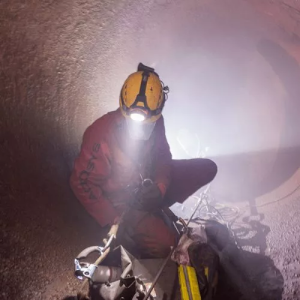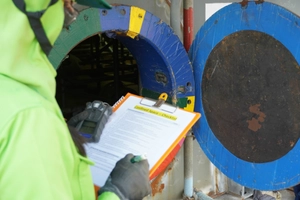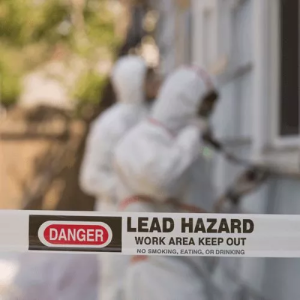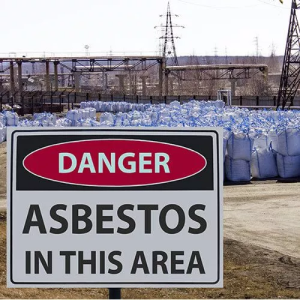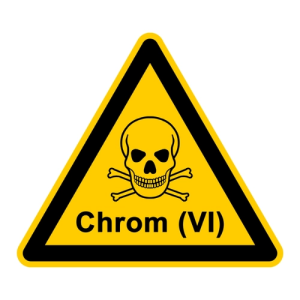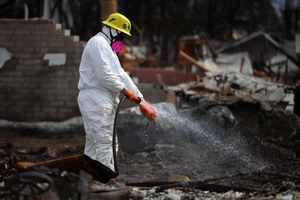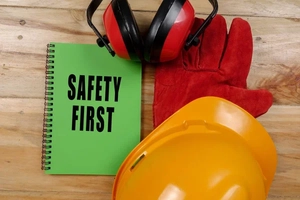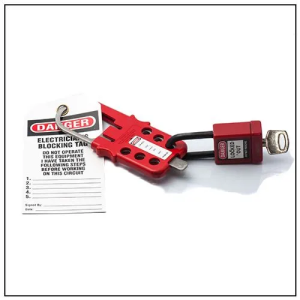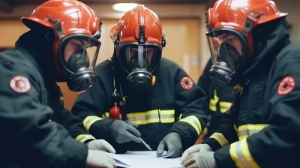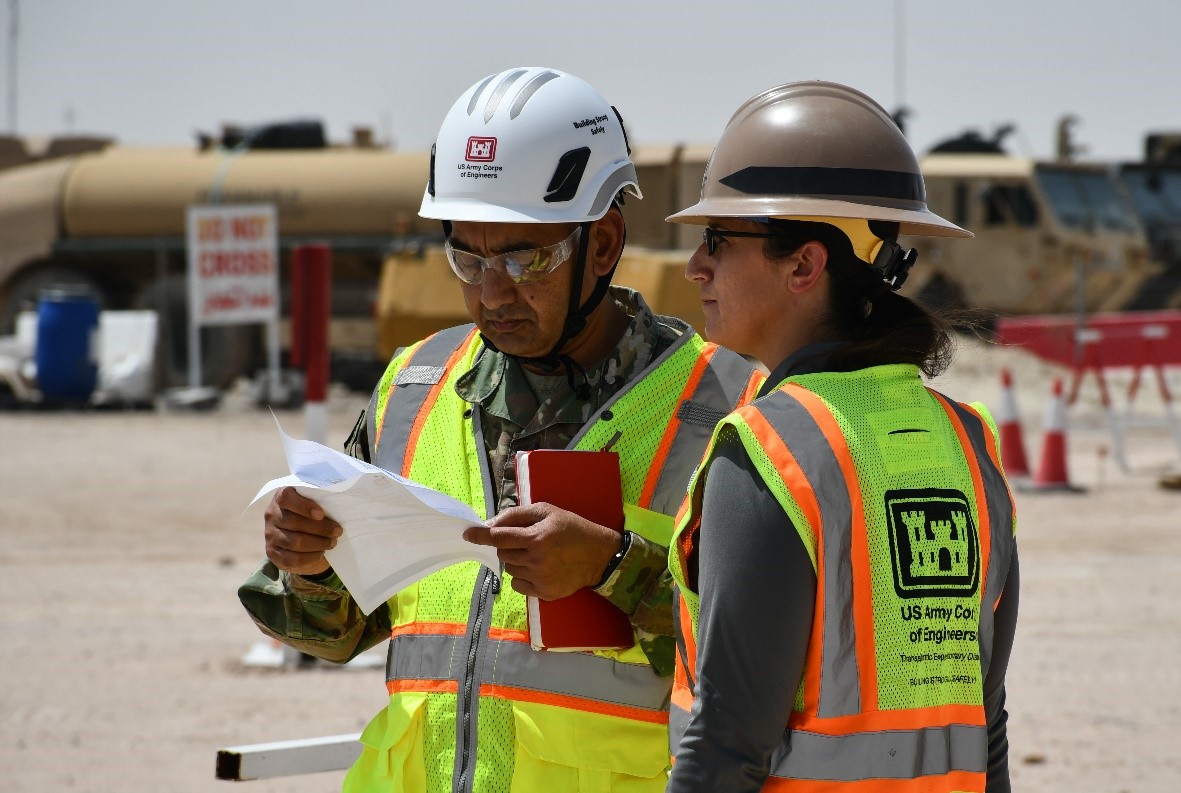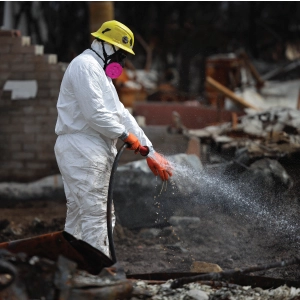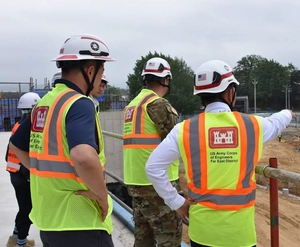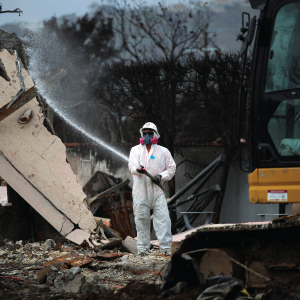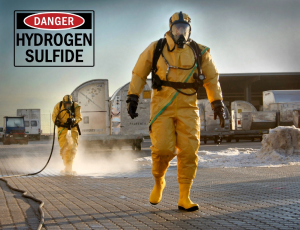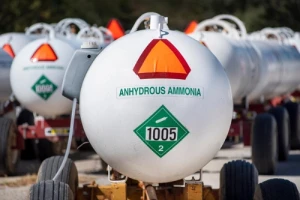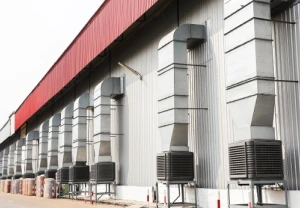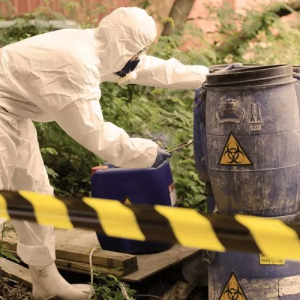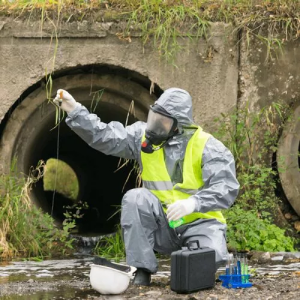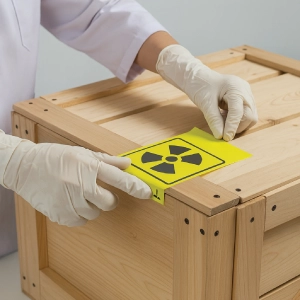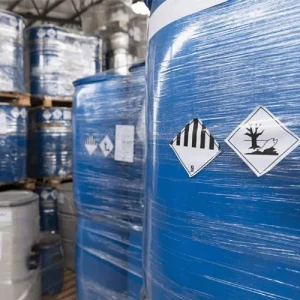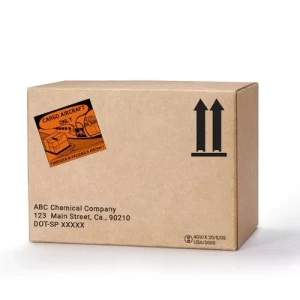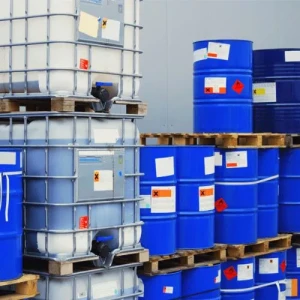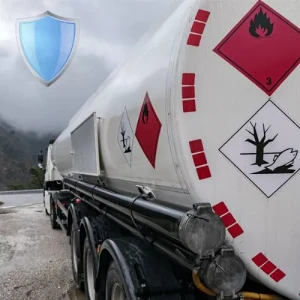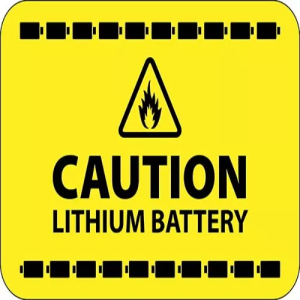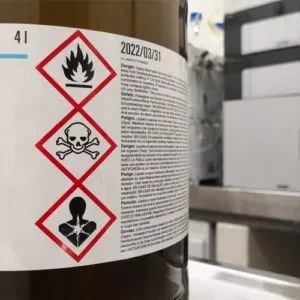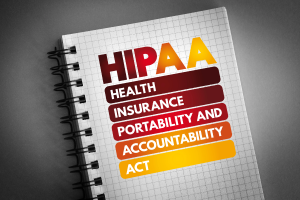OSHA 8 Hour HAZWOPER Annual Refresher – RCRA TSD Operations Training
- In accordance with Federal OSHA Regulations 29 CFR 1910.120(p) and 29 CFR 1926.65(p)
- Available in:
 English |
English |  Español
Español - Study anytime, anywhere, on any device
- Seamless, self-directed mobile training experience
- Instantly download your certificate upon completion
- Listen to the entire course read aloud
- Available as SCORM, on-demand online, virtual instructor-led, or in-person training
0.8
Bulk Buying
| Employee | Per Seat |
|---|---|
| 2-10 | $79.19 |
| 11-20 | $78.39 |
| 21-50 | $77.59 |
| 51-100 | $75.99 |
| 101-250 | $74.39 |
Course Facts
Training Duration
Learning Type
Course Access Validity
Device Support
Certificate Validity
OSHA 8 Hour HAZWOPER Annual Refresher - RCRA TSD Operations Training course is designed for individuals seeking Hazardous Waste Operations and Emergency Response (HAZWOPER) certification for work in compliance with OSHA regulations 29 CFR 1910.120(p)(7)(i) for the general industry and 29 CFR 1926.65(p)(7)(i) for the construction industry. This OSHA 8 Hour HAZWOPER Annual Refresher - RCRA TSD Operations Training is intended for hazardous waste treatment, storage, and disposal facility (TSDF) workers to enable them to maintain their initial OSHA 24 Hour HAZWOPER - RCRA TSD Operations Training certification and remain cognizant of the HAZWOPER regulations as recommended by OSHA.
OSHA 8 Hour HAZWOPER Annual Refresher – RCRA TSD Operations Training Syllabus
The OSHA 8 Hour HAZWOPER Annual Refresher – RCRA TSD Operations Training course syllabus consists of 7 modules broken down into 44 lessons. Students are required to take each lesson in sequential order as listed below.
Introduction
Module 1: Regulatory Overview
This module provides an overview of the OSHA laws and regulations, the OSHA mission and its safety and health standards, and covers the regulations of the Hazardous Waste Operations and Emergency Response (HAZWOPER) training. Lessons also summarize the mission of the EPA and the numerous EPA-administered environmental laws. Dedicated lessons also explain the purpose of OSHA’s Hazard Communication Standard (HCS), explain Safety Data Sheets (SDSs), outlines the key elements of a Safety and Health Program, and give guidance on the components of a medical surveillance program.
- Lesson 1: Laws and Regulations
- Lesson 2: OSHA and the HAZWOPER Standard
- Lesson 3: Hazard Communication
- Lesson 4: Safety and Health Program
- Lesson 5: Medical Surveillance Program
Module 2: Hazard Classification
This second module of the OSHA 8 Hour HAZWOPER Annual Refresher - RCRA TSD Operations Training explains the concepts of toxicology and hazard assessment, and explains the steps involved in a Job Hazard Analysis (JHA). Lessons also provide an overview of the physical, chemical, biological, radiological, and environmental hazards that may be present at a hazardous waste site that may threaten the health and safety of HAZWOPER workers.
- Lesson 6: Toxicology - An Overview
- Lesson 7: Chemicals and Target Organ Toxicity
- Lesson 8: Factors Influencing Toxicology
- Lesson 9: Job Hazard Analysis
- Lesson 10: Physical and Chemical Properties
- Lesson 11: Fire and Oxygen Deficiency
- Lesson 12: Physical, Biological, and Environmental Hazards
- Lesson 13: Bloodborne Pathogens
- Lesson 14: Radiological Hazards
Module 3: Personal Protective Equipment
This third module reviews the need for and use of personal protective equipment (PPE) and the considerations that must be made when using PPE to safeguard worker health and safety. Lessons explain the Hierarchy of Controls, general features of a respiratory protection program, summarize the levels of chemical protective clothing designated by the EPA and distinguish between the three types of chemical breaches that may occur in protective clothing, and recap the various types of PPE options for the head, eyes, face, ears, hands, and feet.
- Lesson 15: Respiratory Protection Program
- Lesson 16: Types of Respirators
- Lesson 17: Personal Protective Equipment Program
- Lesson 18: Chemical Protective Clothing
- Lesson 19: PPE for the Head, Eyes, Face and Ears
- Lesson 20: PPE for the Hands and Feet
Module 4: HAZWOPER Site Operations
This module covers the importance of implementing site control and air monitoring strategies and processes before hazardous waste workers enter a worksite. The three phases of site characterization and the three major work zones that can be found on hazardous waste sites are also discussed. Lessons also focus on the methods to check prevailing atmospheric conditions during preliminary on-site air-testing and describe direct-reading instruments and their numerous types. An overview of confined spaces, designation of permit-required confined space, and information contained in a confined space entry plan are also explained.
- Lesson 21: Site Characterization
- Lesson 22: Site Control Strategy
- Lesson 23: Air Monitoring - An Overview
- Lesson 24: Direct Reading Instruments
- Lesson 25: Toxic Atmosphere Monitoring
- Lesson 26: Personal Sampling
- Lesson 27: Confined Spaces - An Overview
- Lesson 28: Confined Space Entry Plan
- Lesson 29: Entering a Confined Space
Module 5: Material Sampling and Analysis
This module explains the importance of material sampling during the initial on-site characterization process, outlines the elements of a field sampling plan, and explains the difference between environmental and hazardous waste sampling. Lessons also focus on safe work practices associated with opening, handling, and transportation of drums on a hazardous waste site as well as the Department of Transportation (DOT)’s role in the transportation of hazardous waste; and give examples of situations where NFPA and DOT hazard warning signs are used.
- Lesson 30: Field Sampling Plan
- Lesson 31: Types of Material Sampling
- Lesson 32: Handling Drums
- Lesson 33: Opening Various Types of Drums
- Lesson 34: Drum Sampling and Characterization
- Lesson 35: Drum Transportation
Module 6: Decontamination and Site Emergencies
This sixth module of the OSHA 8 Hour HAZWOPER Annual Refresher - RCRA TSD Operations Training course explains the importance of decontamination, as well as the key elements that should be included in an emergency response plan at a hazardous waste worksite. Lessons explain the difference between physical and chemical decontamination, the two types of contamination and factors influencing permeation, the different methods that may be used to analyze the effectiveness of decontamination procedures, outline decontamination protocols for site emergencies, and distinguish between an Emergency Response Plan and an Emergency Action Plan.
- Lesson 36: Decontamination Plan
- Lesson 37: Decontamination Methods
- Lesson 38: Site Emergencies
Module 7: EPA Cradle-to-Grave Program
This final module focuses on the core elements of EPA’s cradle-to-grave program for the management of hazardous waste including the definition and purpose of the Resource Conservation and Recovery Act (RCRA). Lessons give information on the criteria for the classification of hazardous waste generators into three categories and summarize the process by which waste generators can identify whether their waste is hazardous. Lessons also explain how SAAs, CAAs, and TSDFs can collect and manage their hazardous waste, the regulatory requirements applicable for transporters of hazardous waste, and discuss the Emergency Planning and Community Right to Know Act (EPCRA).
- Lesson 39: Resource Conservation and Recovery Act
- Lesson 40: Hazardous Waste - An Overview
- Lesson 41: Hazardous Waste Generators
- Lesson 42: Hazardous Waste Storage
- Lesson 43: Hazardous Waste Transportation
- Lesson 44: Managing Spills and Emergencies
Final Examination
Frequently Asked Questions
The OSHA 8 Hour HAZWOPER Annual Refresher - RCRA TSD Operations Training course must be taken within twelve months of the initial OSHA 24 Hour HAZWOPER - RCRA TSD Operations Training or before the expiration of the previous OSHA 8 Hour HAZWOPER Annual Refresher - RCRA TSD Operations Training certification.
OSHA allows for employees to take the OSHA 8 Hour HAZWOPER Annual Refresher - RCRA TSD Operations Training after the previous training certificate has lapsed. The employee should take the next available OSHA 8 Hour HAZWOPER Annual Refresher - RCRA TSD Operations Training course. The reason for the delay in taking the training and when the training will be completed should be recorded in the employee's file.
There may, however, be instances when a lapsed certificate may require an employee to re-take the initial OSHA 24 Hour HAZWOPER - RCRA TSD Operations Training. Very often, this may be due to the long gap between having taken the training. The requirement for this should be evaluated individually, considering the employee's familiarity with the safety and health processes and procedures implemented at the employer's workplace.
COURSE OBJECTIVES
The core objective of this OSHA 8 Hour HAZWOPER (q) Incident Command Training is to equip participants with the skills and know-how to effectively lead and manage hazardous waste emergency incidents, by ensuring legal compliance, recognizing hazards, implementing protective measures, and employing operational tactics as outlined in OSHA Standards 29 CFR 1910.120(q)(6)(v) and 29 CFR 1926.65(q)(6)(v).
Course Objectives – OSHA 8 Hour HAZWOPER (q) Incident Command Training
After completing the course, the learner will be able to:
- Gain a clear understanding of the duties and responsibilities of an Incident Commander in hazardous waste operations and emergency response situations.
- Enhance the ability to make informed decisions, delegate tasks effectively, and lead a team during hazardous waste emergencies.
- Learn to establish and manage an Incident Command System (ICS) structure, ensuring effective coordination among multiple agencies and response teams.
- Acquire skills to assess risks quickly and acurately during a hazardous materials release and determine the appropriate level of response.
- Assess potential hazards and implement suitable safety measures to safeguard health and the environment.
- Prepare and submit accurate spill and release reports in accordance with federal regulations.
- Understand how to select, use, and manage PPE for both responders and supervisors, ensuring safety during operations.
- Understand respiratory protection principles and select respirators for both responders and supervisors, based on specific criteria.
- Learn to create and manage emergency response plans, integrating them with facility or site-specific requirements.
- Master the skills needed to coordinate responses with multiple agencies, ensuring smooth communication and efficient operations.
- Gain knowledge of OSHA HAZWOPER regulations and how to ensure compliance during incident management and response operations.
- Navigate federal, state, and local emergency response requirements to ensure compliance and enhance coordination with relevant agencies.
- Learn to allocate resources effectively and manage logistics, ensuring all critical aspects of the response are handled efficiently.
- Recognize hazardous materials using placards, labels, and safety data sheets, and understand their associated risks.
- Understand basic toxicological principles and their relevance to exposure risks and protective measures.
- Describe effective decontamination principles and procedures for personnel, equipment, and affected areas.
- Implement medical surveillance programs for emergency responders exposed to hazardous substances.
- Apply site control measures and establish work zones to ensure responder and public safety during HAZMAT operations.
- Understand the importance of post-incident evaluations and debriefings to identify strengths and areas for improvement in future responses.
Choose Your Ideal Training Format:



Virtual Instructor-Led
$299.00/Seat (minimum 10 seats)

Client-Site In-Person
$750.00/Seat (minimum 10 seats)
The ROI of Online Safety Training
Discover the value of our efficient alternative to live training, and calculate your return on investment.


Recommended Courses




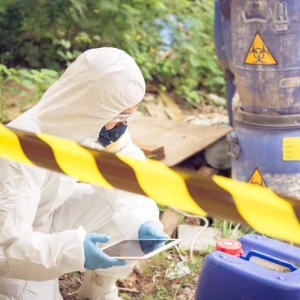



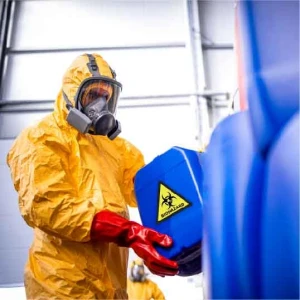


For Corporate Orders and Inquiries please reach out to our sales team at (310) 498-0546
By signing up you agree to receive marketing emails.
Be assured we will never spam you!
 EN |
EN |  ES
ES






